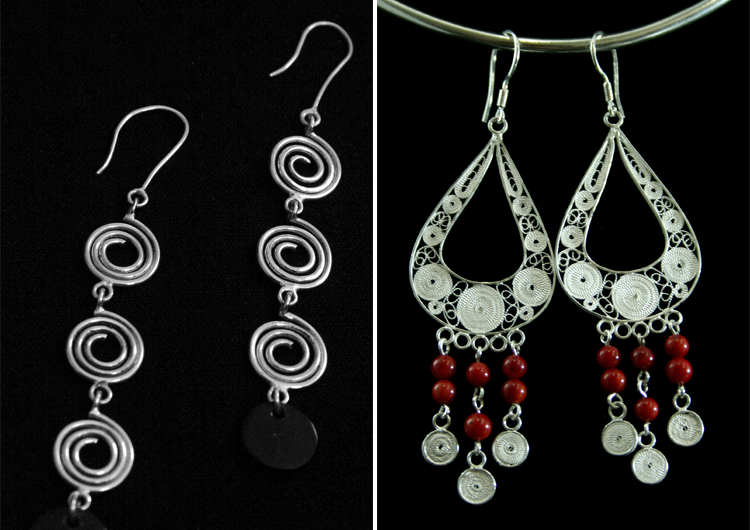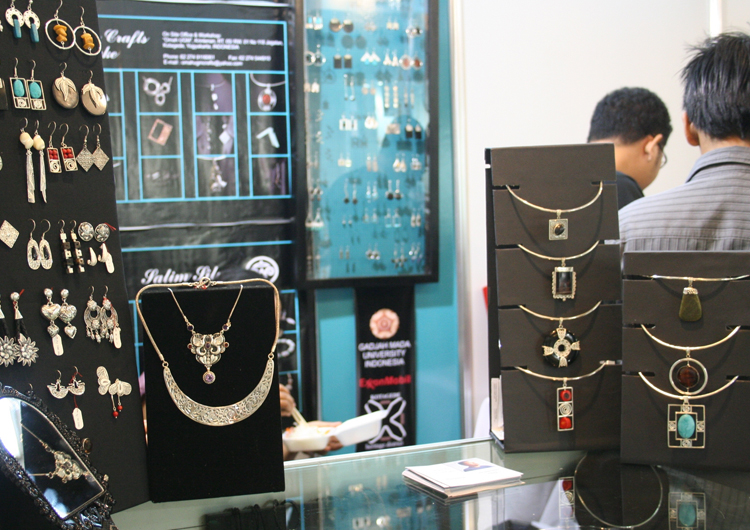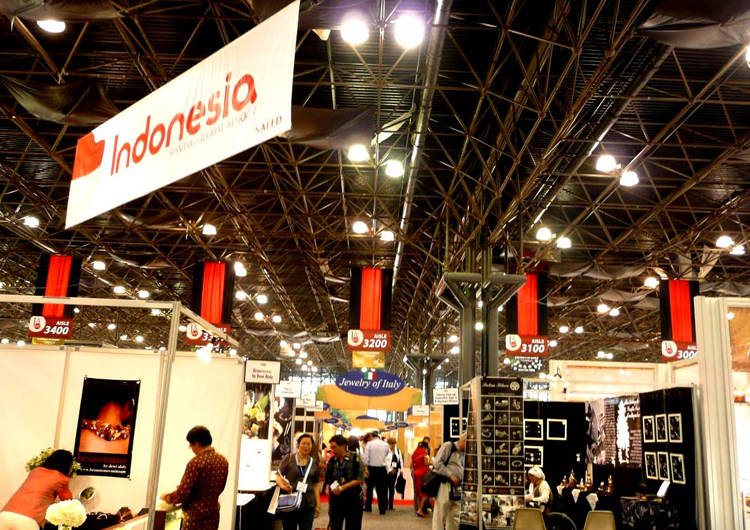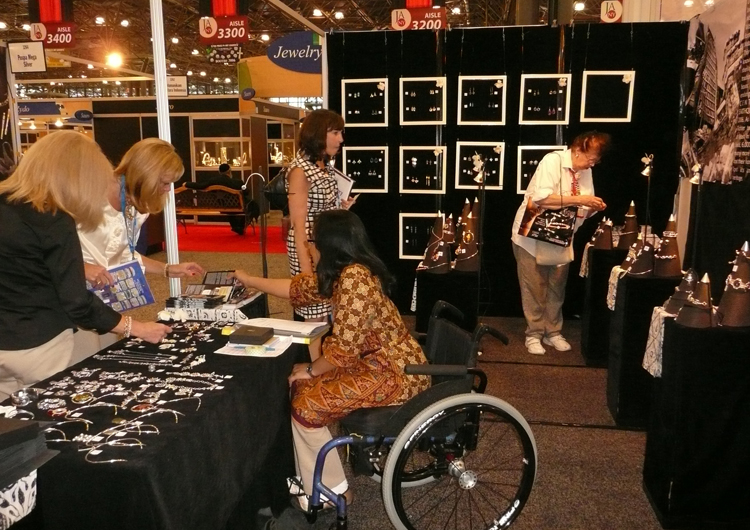
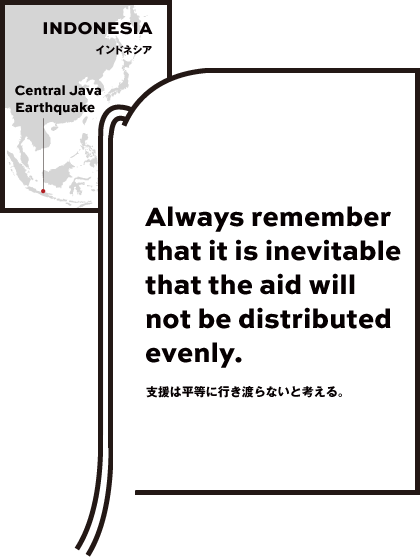 Always remember that it is inevitable that the aid
Always remember that it is inevitable that the aidwill not be distributed evenly.
-

- 復興期
- デザイン
- Ikaputra,
Another six creaters - Architects, Associate Professor of Universitas Gadjah Mada
- Economic Revival Post Earthquake through Craft
- Kotagede Heritage District Case
Listen to disaster survivors and
grasp the true nature of their problems
In May 2006, a major earthquake hit central Java. Yogyakarta, one of Indonesia’s oldest cities, was seriously devastated by the disaster. From June 2006, Ikaputra went to Kotagede, a town known for its silver craft industry, to investigate the situation regarding the destruction of its historic buildings. Subsequently, in October the same year, Ikaputra began his engagement in the building reconstruction project in south parts of the Yogyakarta City, in the most devastated area including the Bantul and Kotagede area. This project included the construction of a temporary building for the Gabusan Craft Market, which had been designed by Ikaputra and opened in 2004, but was destroyed in the earthquake. In January 2007, the market’s temporary building was completed and relaunched.
Meanwhile, during the same period, in the process of implementing the project to investigate the destruction status of historic buildings and promote their reconstruction, Ikaputra met members of various community groups in Kotagede. Carefully listening to the stories of these people about their disaster experiences, Ikaputra found that those hit hardest by the disaster were silversmiths who had long supported the local silver craft industry. So he promptly started out to extend assistance to the silversmiths. Looking back on the situation of those days, Ikaputra says, “While the craft cooperative comprising companies based in the silver craft industry town can enjoy generous government assistance, such government support will not reach the individual craft workers who have actually supported the silver craft industry of Kotagede. I helped them because no one would help them when they were in real need”.
With respect to the project to preserve or reconstruct historic buildings in the same neighborhood in which he worked in those earlier days, Ikaputra also comments, “As for buildings, we can see from the outside how devastated they are. With people, we cannot tell from the outside how their livelihood has been damaged. That is what we have to pay particular attention to when we provide assistance to disaster-hit areas.” To that end, he launched his support activities for the silversmiths in Kotagede.
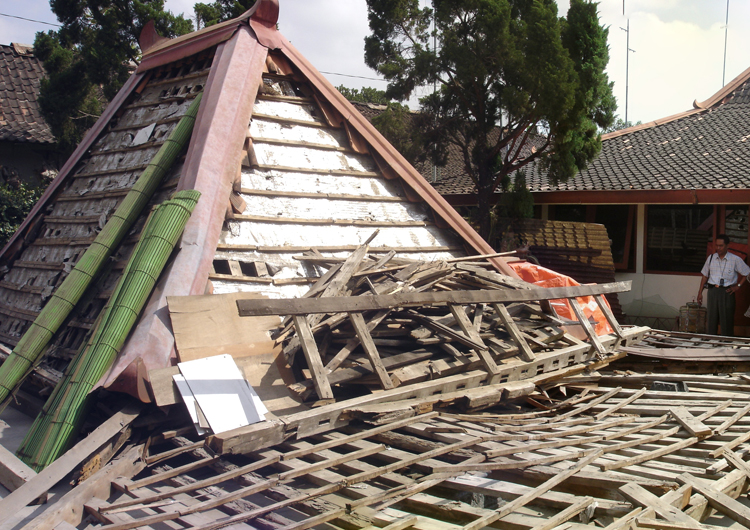
- Historic building in Kotagede severely damaged in the central Java earthquake
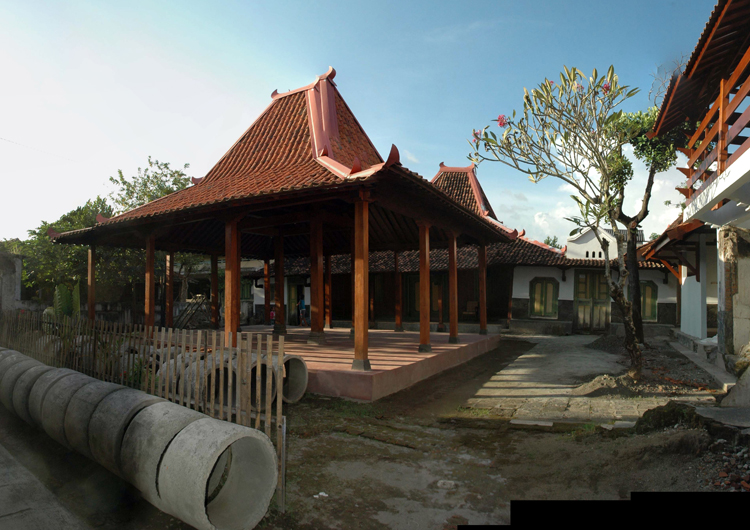
- Assembly space in the local traditional architectural style that Mr. Ikaputra helped to reconstruct after the earthquake
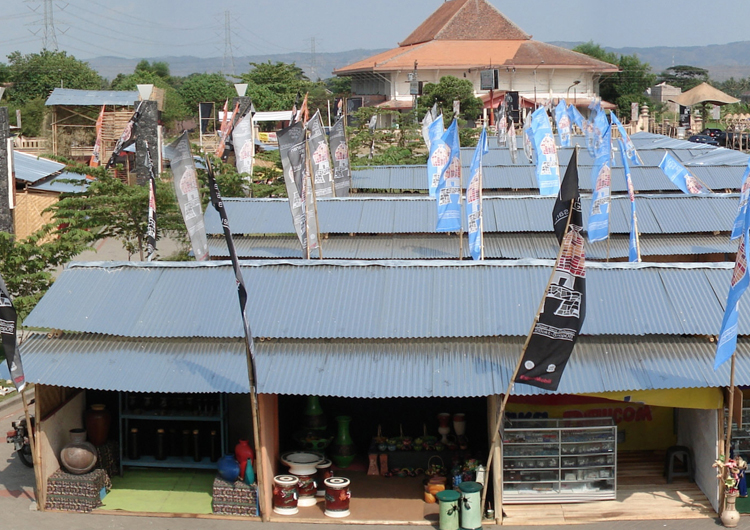
- Temporary building for the Gabusan Craft Market designed by Mr. Ikaputra is launched
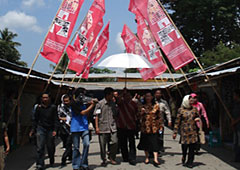
- This market was opened as part of the economic assistance program to secure sales channels for crafts in the Bantul area
including Kotagede
Consider reconstruction support an opportunity to rethink existing production system
Determined to support the silversmiths, Ikaputra consulted Exxon Mobile, a U.S. oil company that assisted in the project to reconstruct the collapsed craft market, about this new support project. With the oil company’s approval to assist in this project, support activities started in earnest from March 2007. Exxon Mobile, provided aid totaling 4 million yen over two years. Instead of equally distributing the aid money directly to every single silversmith in Kotagede, Ikaputra designed and implemented a new support method aimed at rebuilding a production system that would last after the two years had passed and that would improve the silversmiths’ working conditions.
In the usual silver jewelry production system, silversmiths receive materials and sample products from a craft cooperative and make the same products as the samples. The silversmiths then bring the finished products to the cooperative and receive 50% of the selling price. In this system, however, the craft workers whose livelihoods had been devastated by the disaster could hardly survive.
To address this problem, Ikaputra developed a new system in which Universitas Gadjah Mada functioned as an intermediary between, Exxon Mobile, and the silversmiths, with the university first securing a management fee from the aid money and paying design fees to the silversmiths in advance when providing them with the materials. In this newly established production system, Universitas Gadjah Mada will receive the finished products and carry out promotion and sales on behalf of the silversmiths. The university will also pay 100% of the proceeds from the sales of the products to the silversmiths.
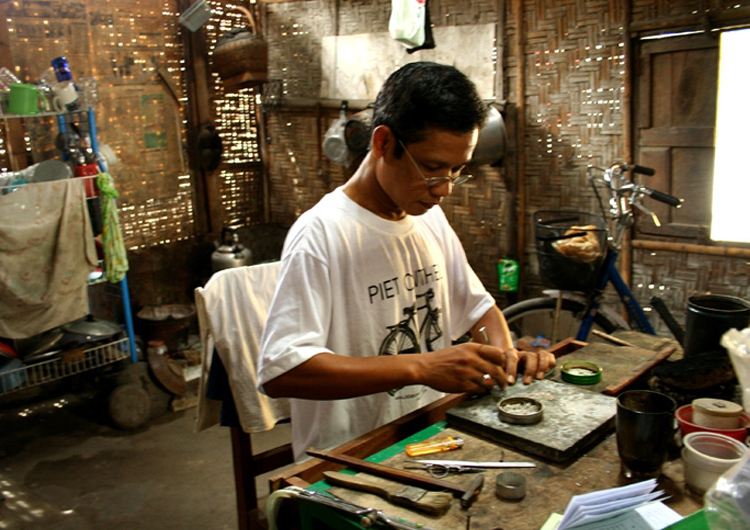
- Silversmith workshop in Kotagede
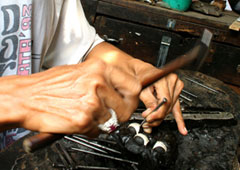
- Silversmith workshop in Kotagede
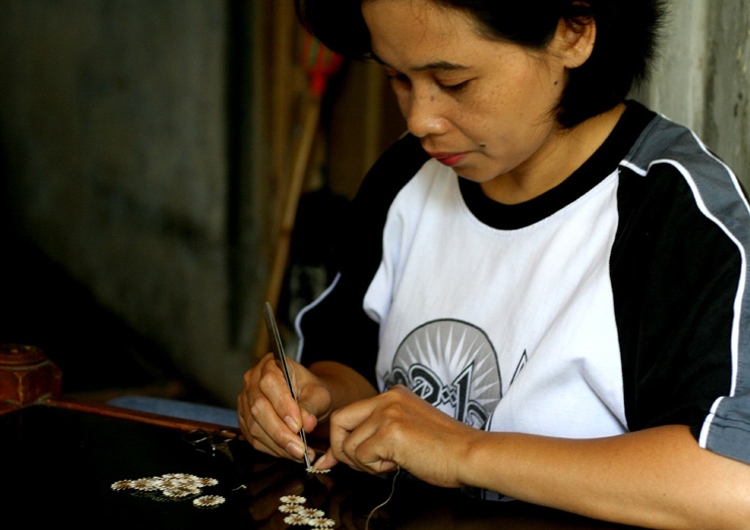
- Silversmith at work
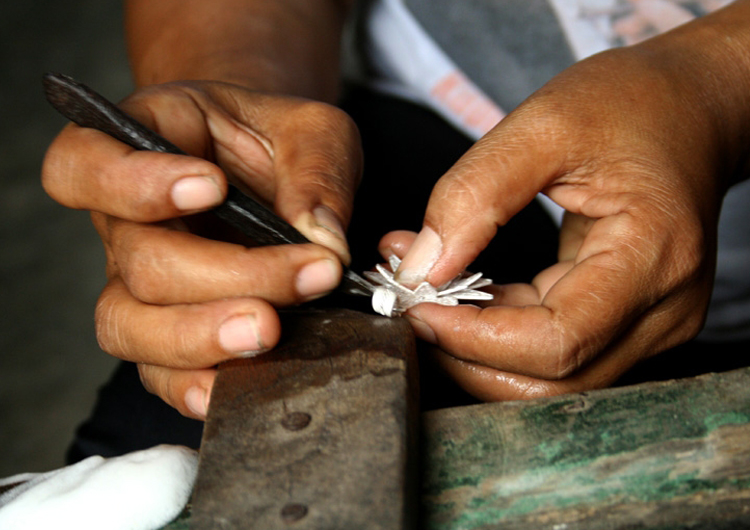
- Silversmith’s skilled handicraft technique
From beginning to end, just provide support to offer designs for a limited time only
The duration of the project was set to be two years, by the end of which the disrupted distribution system was expected to recover to its pre-disaster condition. When the conventional distribution system where the craft workers produce silver items in response to orders from the craft cooperative was restored, it was believed that the craft workers would be able to lead a stable lives again. Limiting the duration is another reflection of Ikaputra’s policy concerning assistance to disaster-hit people—that is, “Extend help when help is truly needed. Promote independence rather than providing excessive support”.
In this project, efforts were also made to develop new jewelry designs. Seven creators, including Ikaputra himself, participated in jewelry design on a voluntary basis. As a result, they came up with 84 unconventional and stylish jewelry designs and provided them to 50 craft workers who were particularly destitute. These novel silver craft items were sold at an antenna shop, “Gadjah Mada House” (Omah UGM),established in Kotagede with capital provided by Universitas Gadjah Mada. The jewelry items were also displayed at exhibitions in Indonesia and New York. As a result, sales of these products were quite favorable in the early stage of this project.
The two-year support project completed its mission and the conventional distribution system is now back in place. However, two challenges remain. First, the new production system proposed by Ikaputra to improve the working conditions of the craft workers was not adopted. It was difficult to change the established production system that had long prevailed in the local community in two short years. The second challenge was that no marketing experts participated in the project, resulting in the failure to secure stable sales channels for finished products and a gradual decline in sales. To address these challenges, Ikaputra is studying more effective approaches that could be adopted in future support activities.
